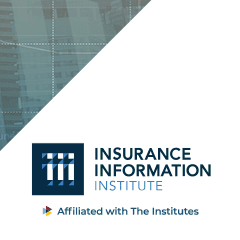While COVID-19’s impact on the insurance industry will require time to fully understand, litigation, legislation, and concerns about pricing and policy language will be with us for some time to come.
“Significant” changes in policy language seen
The majority of respondents to an Artemis re/insurance market survey believe the COVID-19 pandemic will result in “significant changes” to business interruption (BI) policy wordings.
In fact, the U.K. Financial Conduct Authority (FCA) is conducting a review focused on obtaining legal clarity on policies connected to the pandemic and which claims are valid and which aren’t.
FCA’s Interim CEO Chris Woolard said recently that while some BI policies are paying out for virus-related issues, others remain “within dispute” due to ambiguities in their wordings.
Outside of the 67.6% who stated a belief that COVID-19 will drive “significant changes” in BI policy wordings, 21.6% expect a “moderate amount” of change, while the remaining 10.8% said the effect will be “limited.”
Loss estimates vary
The Artemis survey also shows 67% of respondents expect the industry to face between $80 billion and $100 billion of underwriting losses due to the pandemic. This is roughly in line with Lloyd’s of London’s earlier estimate of a $107 billion global industry impact.
But analysts from investment bank Berenberg said they believe global COVID-19 claims will be more manageable, estimating a range from $50 billion to $70 billion for the total bill. The analysts don’t specify whether this includes both life and non-life insurance claims from the pandemic, but they do point to the estimate from Lloyd’s of London as being too high.
“We estimate $50-70bn for global COVID-19 claims,” Berenberg’s analysts state. “Significantly less than the $107bn estimate reported by the Lloyd’s of London market estimate on 14 May.”
Las Vegas Hospitality Union Sues Employers
Las Vegas Culinary Workers Union Local 226 is suing several employers on the Las Vegas strip over unsafe working conditions during the coronavirus pandemic, Business Insurance reported.
The union, representing 60,000 workers, said in a statement it is asking for injunctive relief under the Labor-Management Relations Act based on the “hazardous working conditions” workers face.
The lawsuit alleges casino hotels have not protected workers, their families, and their community from the spread of COVID-19 and that current rules and procedures in place for responding to workers contracting COVID-19 have been “wholly and dangerously inadequate.”
The Culinary Union made a number of requests for policy changes, including daily cleaning of guest rooms, mandatory testing of all employees for COVID-19 before returning to work and regular testing thereafter, adequate personal protective equipment for workers, and a requirement that guests wear face masks in all public areas.
Best Warning on COVID-19 Workers’ Comp Laws
Insurance rating agency A.M. Best has warned that legal efforts in several U.S. states to expand workers’ compensation coverage to allow employees to claim for COVID-19 will have a negative impact on re/insurers, Reinsurance News reports.
The crisis has resulted in many employees now working from home, but a significant part of the workforce still needs to be present and public facing, and this is the group new state laws aim to support. For these workers, some states are looking to shift the burden to the insurer to prove that an employee contracting COVID-19 did not do so while on the job.
“This shift in the burden of proof could lead to significant additional losses to a segment already under pressure and result in increased reserve estimates and higher combined ratios,” A.M. Best said.
Given that assumptions used in pricing and actual loss emergence diverge significantly, these legislative changes will result in an increase in loss estimates and could affect earnings.
Businesses Ask Patrons to Waive Right to Sue
As businesses reopen across the U.S. after coronavirus shutdowns, many are requiring customers and workers to sign forms saying they won’t sue if they catch COVID-19, Associated Press reported.
Businesses fear they could be the target of litigation, even if they adhere to safety precautions from the Centers for Disease Control and Prevention and state health officials. But workers’ rights groups say the forms force employees to sign away their rights should they get sick.
So far, at least six states — Utah, North Carolina, Louisiana, Oklahoma, Arkansas and Alabama — have such limits through legislation or executive orders, and others are considering them. Business groups such as the U.S. Chamber of Commerce are lobbying for national liability protections.








